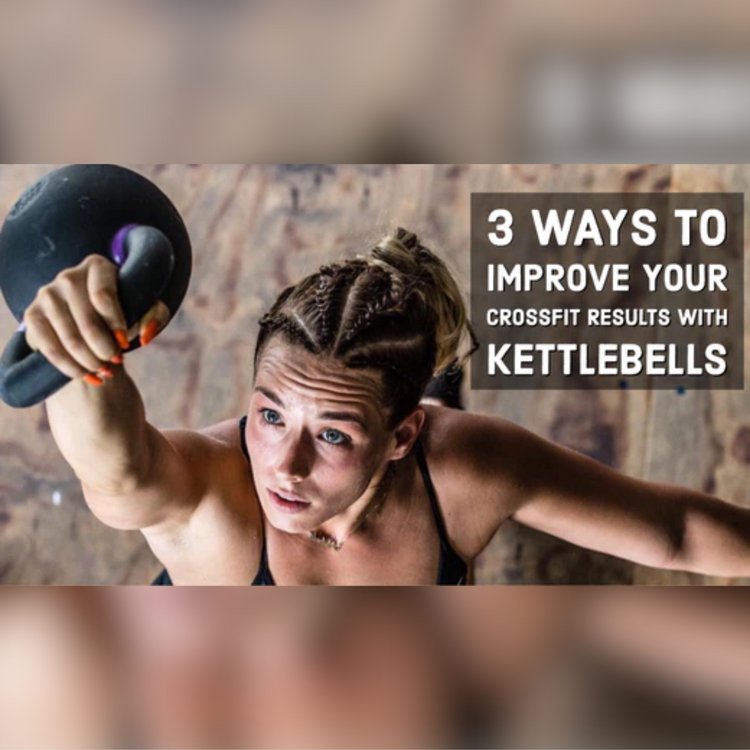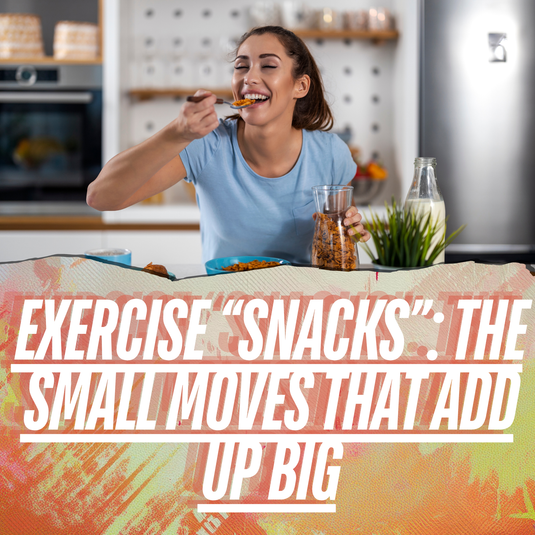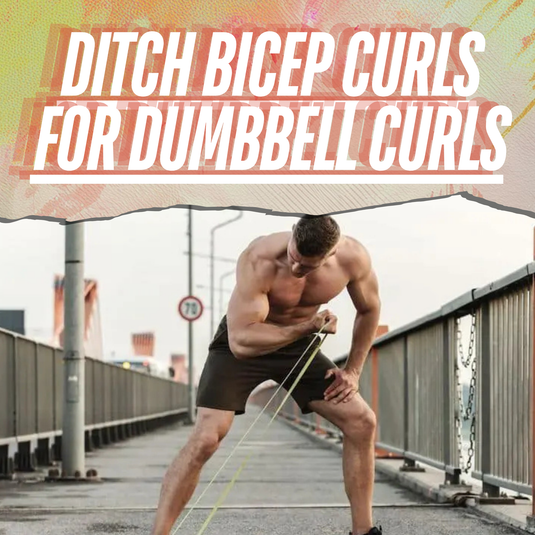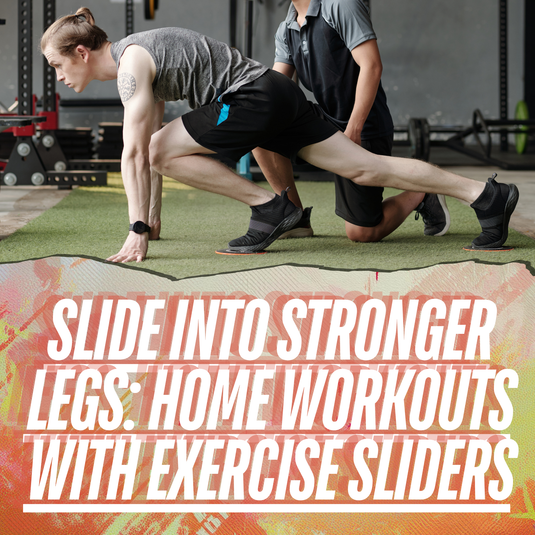Kettlebell Carry for CrossFit Gains

⏱️ Estimated Read Time: 6 minutes
🧠 TL;DR
- Kettlebell Carry for CrossFit Gains offers effective, accessible movements for targeted results.
- This guide is designed to help you move smarter, build strength, and stay consistent.
✍️ Summary
This post explores kettlebell carry for crossfit gains in a way that’s actionable and easy to follow. Whether you're new to this style of training or leveling up, it includes practical takeaways for your routine.
📚 Table of Contents
Kettlebell Flow Demonstration discussed in #3
Most athletes play to their strengths and those doing WODs are no exception. Typically the focus is on the same few movements performed in a high intensity format with the goal being to demolish your time or that of your gym buddy. We believe there are some ways that you could incorporate kettlebell fitness into your routine kettlebells into your WODs to improve your all around results.
In recent times many who were staunch Crossfit only athletes have started to evolve adding in active recovery work as well as joint healthy fun. However, as I have witnessed time and time again with many athletes there are still a huge sect of followers who perform the workouts from HQ to a T with little to no deviation or though of improvement. Here are three ways you can incorporate kettlebells into your burpees and double-unders that will make you a more resilient, well-rounded athlete and perform better in your WODs. Incorporating kettlebell exercises for athletes can enhance overall performance.
Kettlebell Addition #1: Add Rotation
Just about every movement that comes out of a typical Crossfit workout hits the sagittal plane (folding, hinging, etc). From deadlifts to presses, box jumps to squats, participants have little to no rotation happening. Learning how to properly rotate under load with explosive power will help build an even stronger, well-rounded athlete. While it is hard to quantify most rotational movements (how far of a rotation counts as a rep) there are a handful of kettlebell exercises that can easily be used in place of some dumbbell work that will help build rotational output and satisfy the Crossfit need to count reps. Here are three examples of movements that you can use. Adding a kettlebell carry can further enhance your core stability and strength, making it a vital component of kettlebell training.
-
Rotational Deadstart Clean
starting the movement from the ground outside your right foot, grab the bell with your left hand. Pull explosively into the rack position staying square. Unravel the bell and return across your midline to the starting point on the ground outside the right foot. View !
2. Rotational Snatch
Starting with the kettlebell in the rack position in your left hand unravel the bell across the body to your right. Using momentum and a powerful rotation to the left, snatch the bell turning 90 degrees to the left. Come back to the center and repeat. View!
the body to your right. Using momentum and a powerful rotation to the left, snatch the bell turning 90 degrees to the left. Come back to the center and repeat. View!
3.Staggered Crossbody Single Kettlebell Deadlifts
Stand in a staggered stance with your right foot forward and left foot back with your left toe in line with your right heel. With the kettlebell in front of your left foot, hinge and rotate slightly grabbing the bell with your right hand. Get to full extension, hinge and repeat. View!
When and why to incorporate: Building rotational power will help build output for traditional bi-lateral, sagittal work (such as cleans and snatches). Strengthening your glutes, hips, erectors, lats, and trunk from multiple planes will build strength from different angles and keep your body durable. Play to your strengths for too long and you run the risk of developing overuse injuries.
Kettlebell Addition #2: Add Isometric Holds
Stability is strength. While slowing down is not as palatable for most Crossfit athletes it is only going to help build more awareness and control when you get explosive with your training. Most gym-goers can barely handle the weight they are using (this is an overall gym issue and not just a Crossfit thing). Incorporating bottom’s up holds, pauses within movements like presses or goblet squats as well as partner loaded pressing is a great way to get the nervous system firing and prepare the tissue for heavier work. Kettlebell squats are an excellent addition to enhance lower body strength.
-
Bottom’s Up Holds
- Clean a
so the bell is upside down. Maintain full body tension as you keep the bell in this position without sinking your shoulder down or your arm into your lat. Think of this as a standing plank. This will help you marry your breath to your body, learn how to breathe through tension, get into proper alignment for pressing, and prepare your grip, wrists, and shoulders for any overhead work. -
Add a pause in your press
- With a single kettlebell begin the press. Pause when your arm is parallel to the ground. Avoid leaning or rotating Continue the movement until your arm is overhead. Return the bell and pause again at parallel. Finish the movement in the rack. The pause is dependent on you and the weight you are using. Add 1-10 seconds to intensify the hell out of the movement and build contralateral strength through your entire trunk. -
Add partner-loaded pressing
- Partner A will rack a kettlebell and brace themselves. Partner B will provide force from a variety of angles creating more tension and awareness to the position. This is a great way to prime the body for heavier work and adds an element of teamwork.
For a closer look at the movements discussed in this article, have a look at our free Level 1 - Introduction to Kettlebell Strength and Flow here!
When and why to incorporate
Kettlebell Addition #3: Add Flow
Play is primal and if there is one thing I know about Crossfit athletes is they are all about being primal. All kidding aside, adding in flow adds a much needed element to the repetitive patterns that occur in most Crossfit workouts. Once my client is proficient in a handful of kettlebell movements including a few rotational ones, I will add in flow components into their training to practice moving in multiple patterns while building and redirecting force. This builds a level of coordination and awareness that will keep you safe through multiple movement patterns at a variety of speeds. The focus of flow is to lose the reps and sets and simply move. While it is a tall order for most, here are a couple ways to scale it back for new users. Incorporating kettlebell training into your routine can significantly boost your fitness levels, offering numerous kettlebell benefits.
-
Select 3-5 movements
-
For advanced kettlebell users
When and why to incorporate?
Using flow as a warmup with a lighter weight will help build awareness through multiple patterns. It teaches you how to blend tension, fluidity and explosiveness to keep the structural integrity of your joints. Learning how to redirect load from multiple planes and levels builds awareness, strength from angles you will rarely work on and coordination.
All this while building some crazy lighting endurance that will carry over into the toughest of conditioning wods. There ya go. Three ways that you can start using your kettlebells as more than a weight to deadlift or keep doors open that will help you become a better Crossfit athlete and overall athlete. Discover the kettlebell benefits that can elevate your workout routine and enhance your athletic performance.
The better mover you are (in this case with a kettlebell) the more you will get from any athletic endeavor.
Until next time!
Author
Marcus Martinez
Master Kettlebell Coach
Want more guidance? Check out our Weekly Dumbbell Workout #1.
📝 FAQs
How often should I do these exercises? +
2–3 times per week is a good starting point for most people.
Do I need equipment? +
Many of these can be done with just your bodyweight or a single kettlebell or dumbbell.
Can beginners do these routines? +
Yes! These movements are designed to scale with your fitness level.








